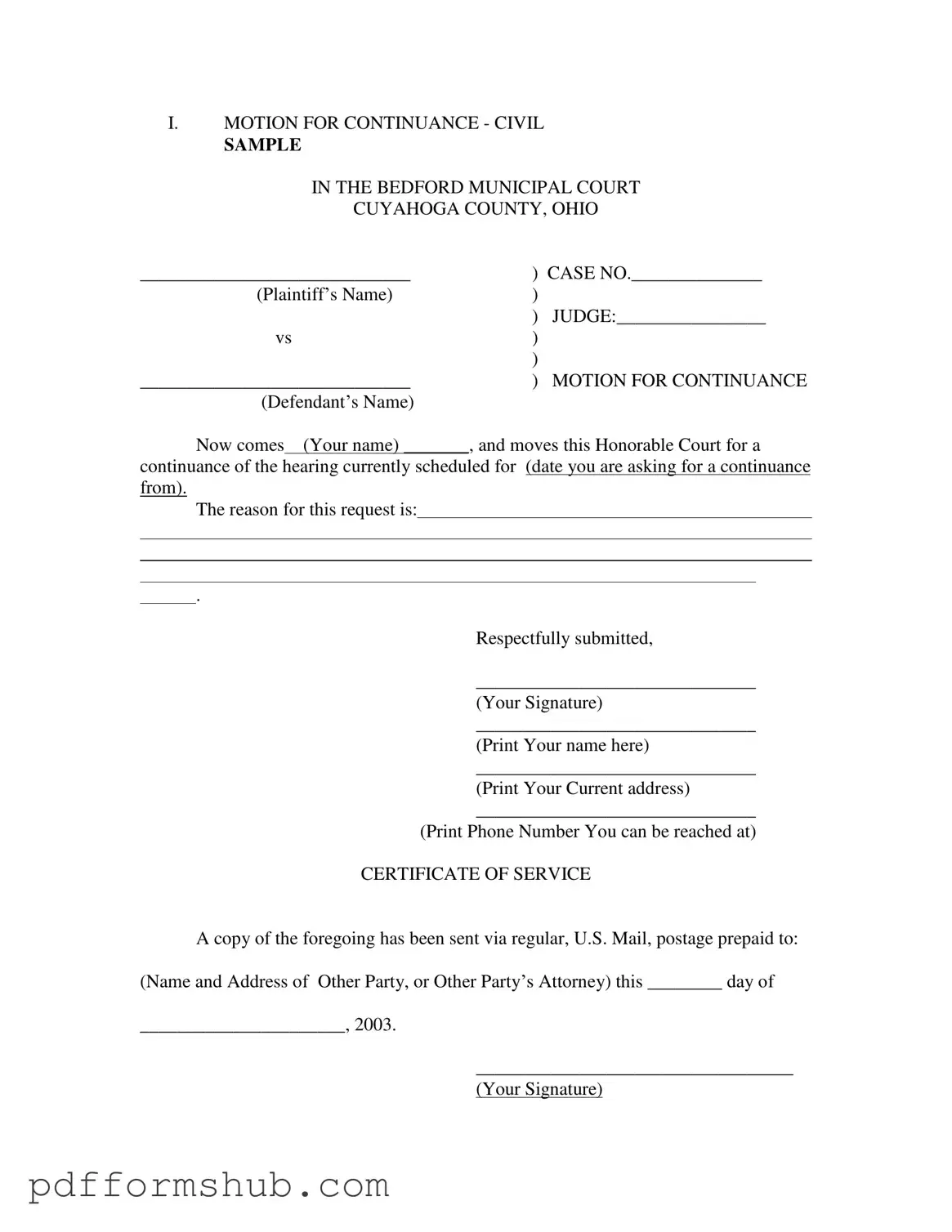The Motion for Continuance form serves as a vital tool within the legal process, particularly in civil cases, allowing parties to request a delay in scheduled court hearings. This form is essential for individuals who may need more time to prepare their case or require additional time due to unforeseen circumstances. Typically, the form includes critical elements such as the case number, the names of the plaintiff and defendant, and the specific date of the hearing that is being postponed. The requester must provide a clear reason for the continuance, ensuring that the court understands the necessity of the delay. Furthermore, the form requires the signature of the individual making the request, along with their printed name, current address, and contact information, ensuring that all parties can be reached effectively. Additionally, a Certificate of Service is included, which confirms that a copy of the motion has been sent to the other party or their attorney, maintaining transparency in the legal proceedings. By understanding the components and purpose of the Motion for Continuance form, individuals can navigate the complexities of the legal system with greater confidence and clarity.
